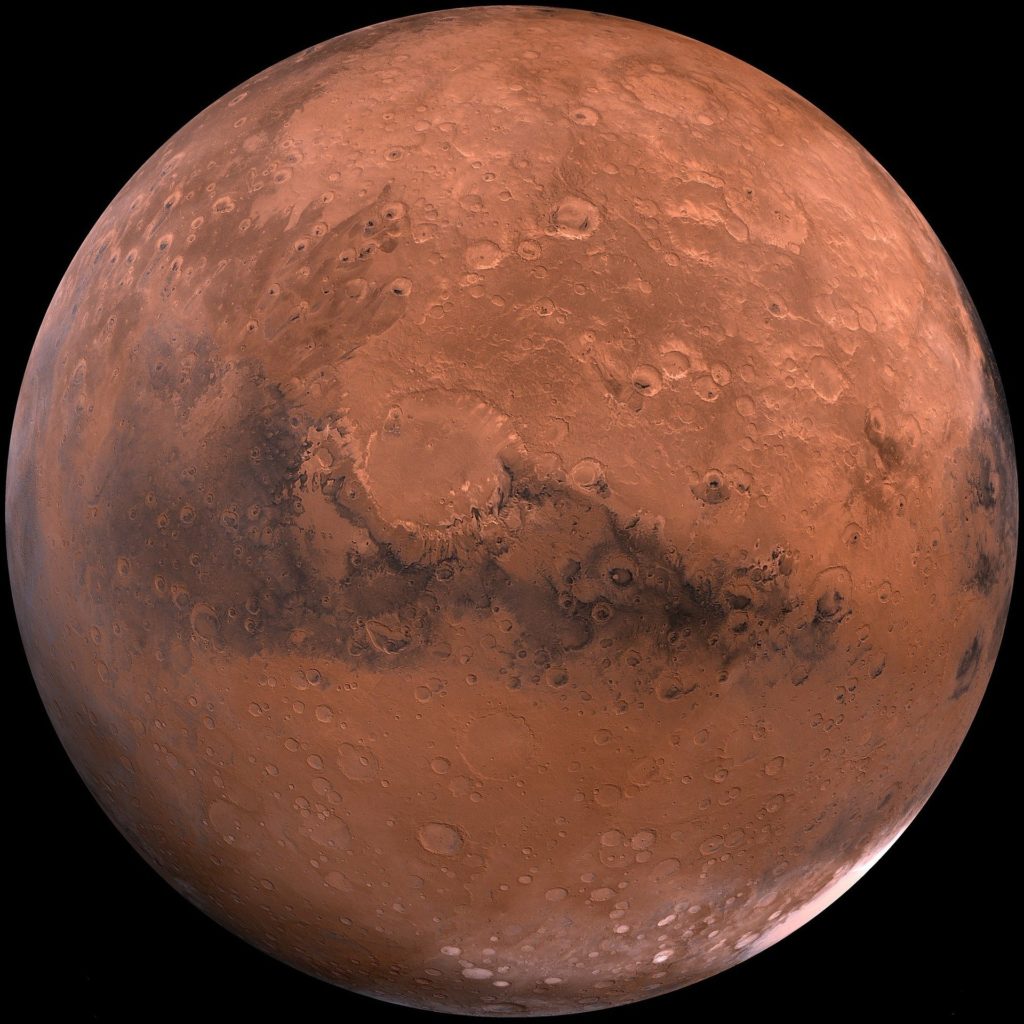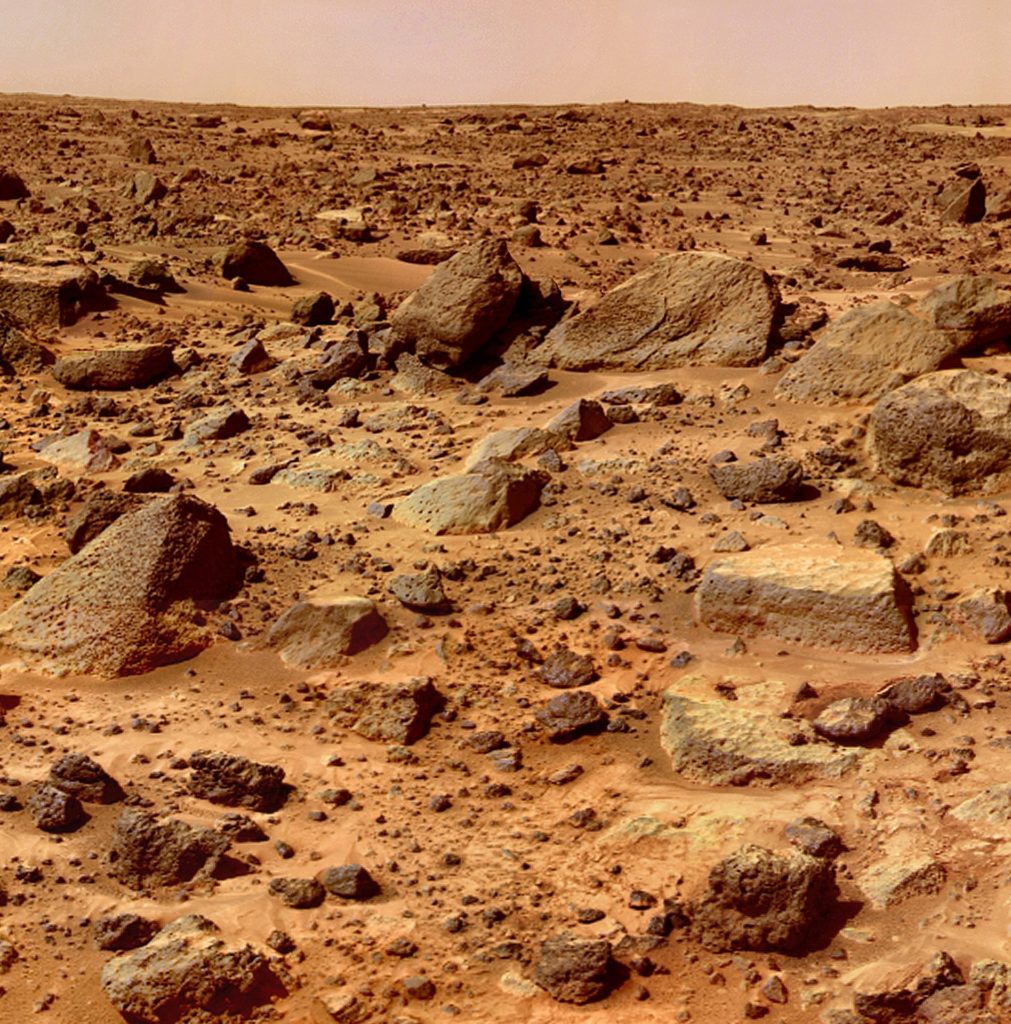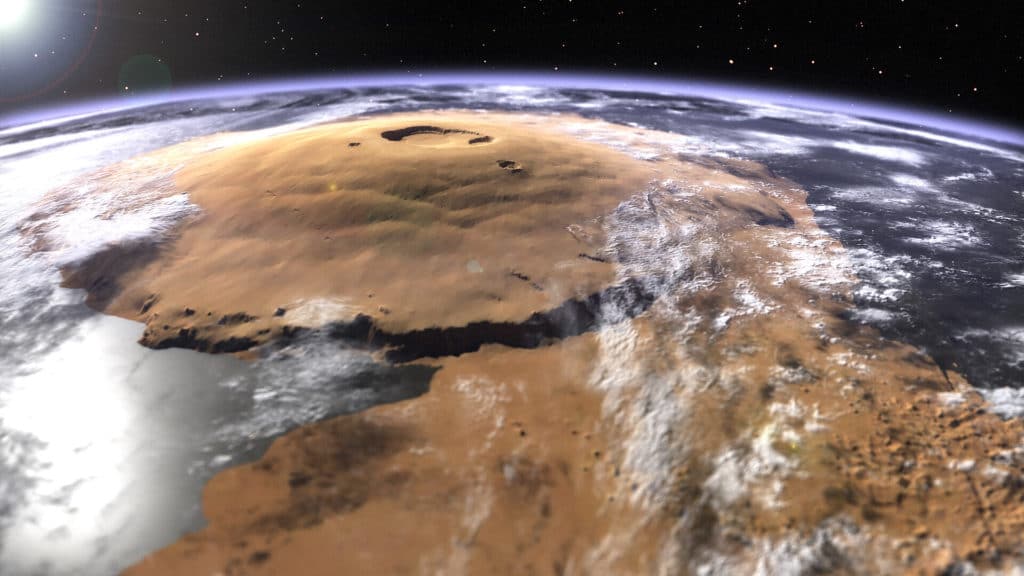We often call Mars the Red Planet because of the color from afar. We’ve been investigating Mars for a while now and are starting to learn more about this red planet. Today we’re going to share some of what we know thus far about this planet in the solar system.

Next Time Closest To Earth
In 2003 the Hubble Space Telescope was able to take a beautiful photo of Mars while it was closer to Earth than any other time in history. It’s expected that Mars will be closer to Earth again in the year 2287. Perhaps they’ll get an even better photo next time!
7th Largest Planet
Mars is the 7th largest planet in our solar system. The radius of the Red Planet measures 2,106 miles. The surface gravity is 37.5 percent that of our home planet, Earth.
One Martian Day
Mars rotates on its axis every 24.6 Earth hours and so now we deem that time as One Martian Day. Since Mars rotates similarly to Earth, it can have seasons much like our planet Earth.

Seasons are Different
While Mars does have seasons, they last longer and are different than Earth’s seasons. The location of Mars in relation to the sun and how it rotates can make the seasons last 199 Earth days.
Was Once a Watery Planet
Over time we’ve begun to learn more about Mars and one fact is that it was once windy and watery. Robotic rovers have found evidence that billions of years ago water flowed freely on the Red Planet with lakes and rivers covering the planet.
Strong Winds
Mars is known to have gusts of wind that measure 60 mph. These gusts of winds create huge dust storms, even though the air is rather thin on Mars. The air pressure on top of Mt. Everest is 50 percent higher than that found on Mars, yet the Red Planet still has wind storms.
Huge Mountains
Mars is similar to Earth in that it has mountains, valleys, and volcanos, however, these natural creations are much larger and much lower than those found on Earth. The solar system’s largest volcano known as Olympus Mons peaks up 16 miles above Mars surface. This makes Olympus Mons three times taller than Mt. Everest.

Wildly Different Hemispheres
One of the interesting facts about Mars is that their southern and northern hemispheres are extremely different from each other. The northern hemisphere has mostly low-lying plains and the planet’s crust is about 19 miles thick. The southern hemisphere of Mars is full of highlands and the crust can be measured at 62 miles thick in most areas.
We hope you found this information entertaining and educational. Whether you’re on the list to travel to Mars in the future or are simply interested in keeping up to date with the recent Mars data, we hope you enjoyed this article.
